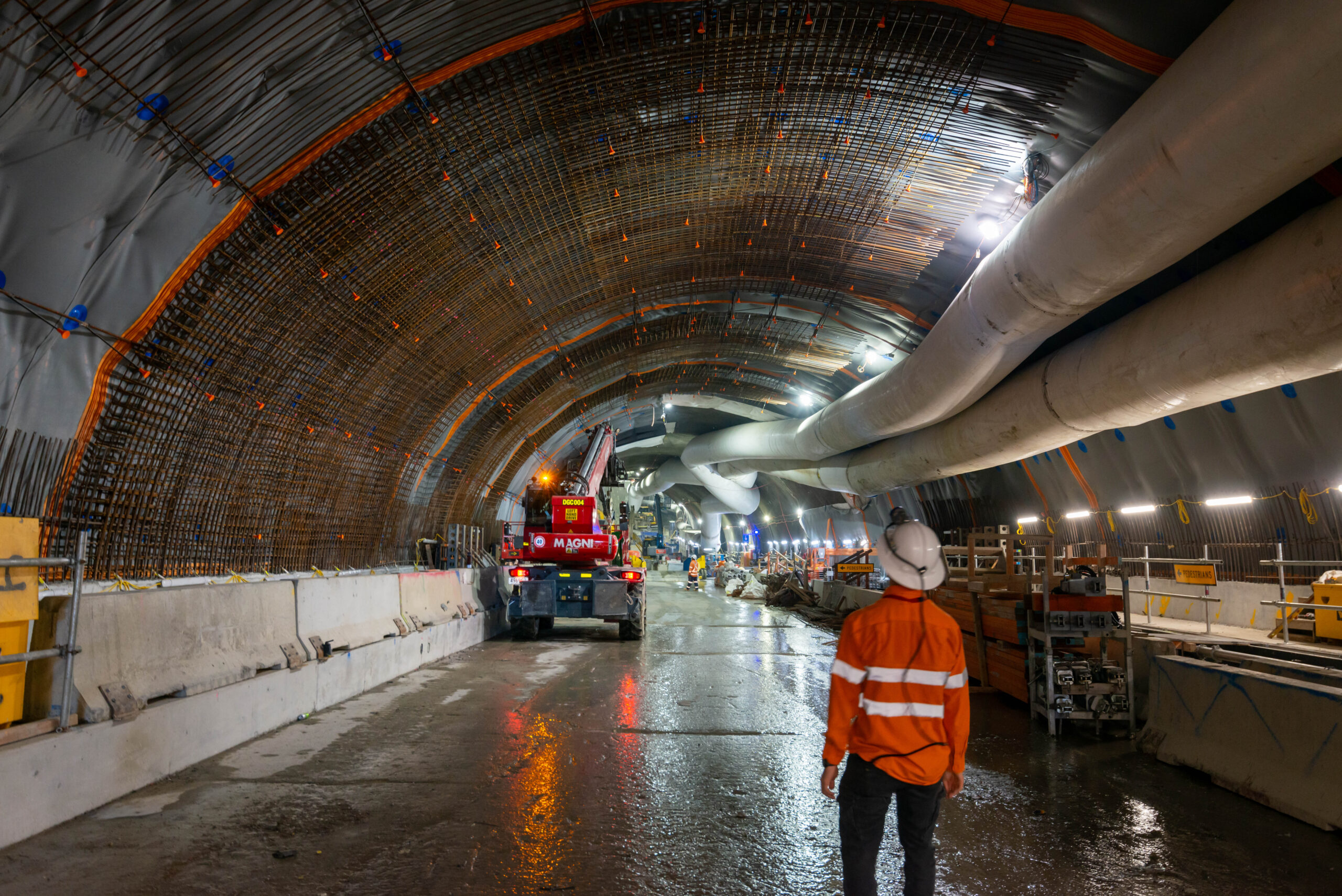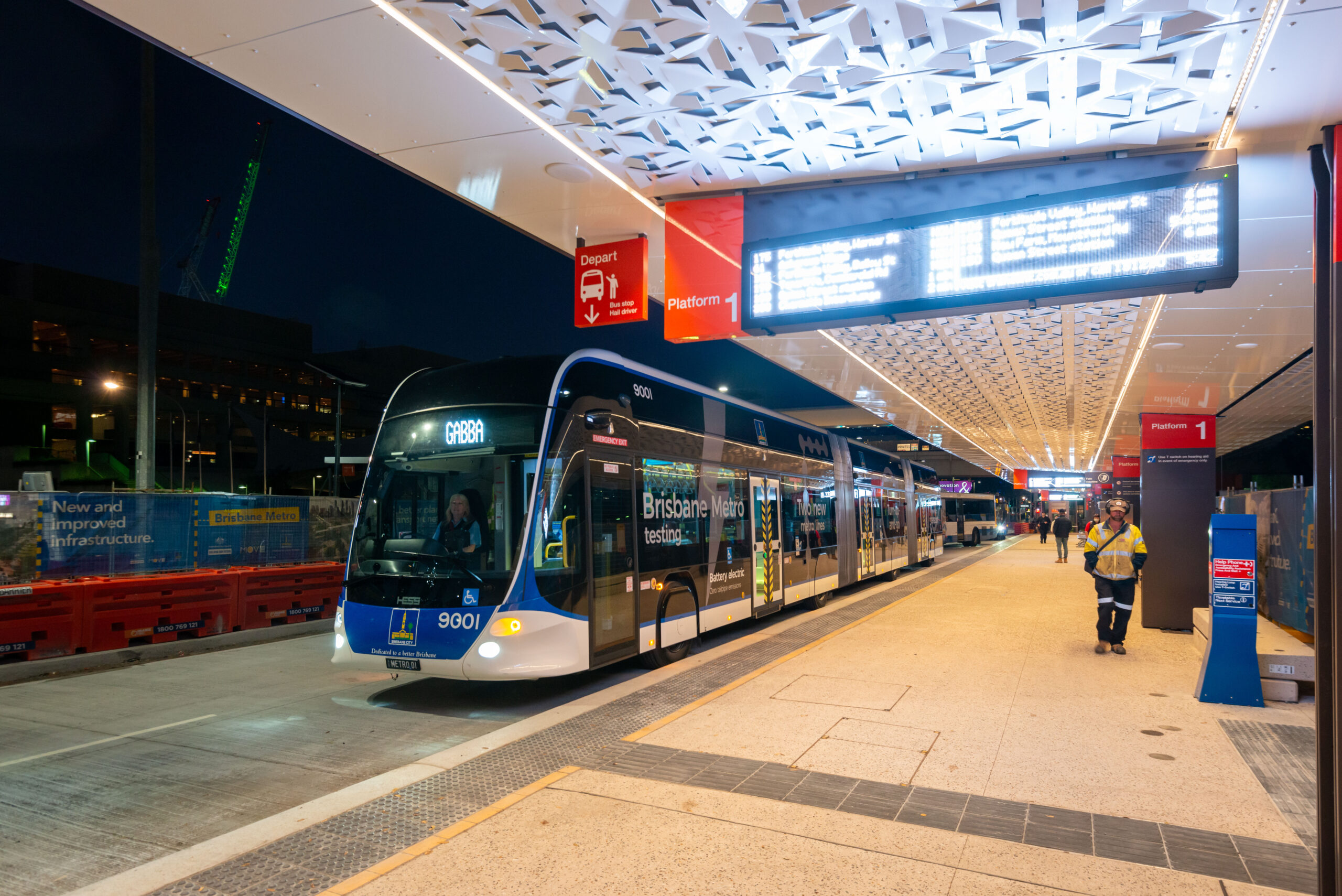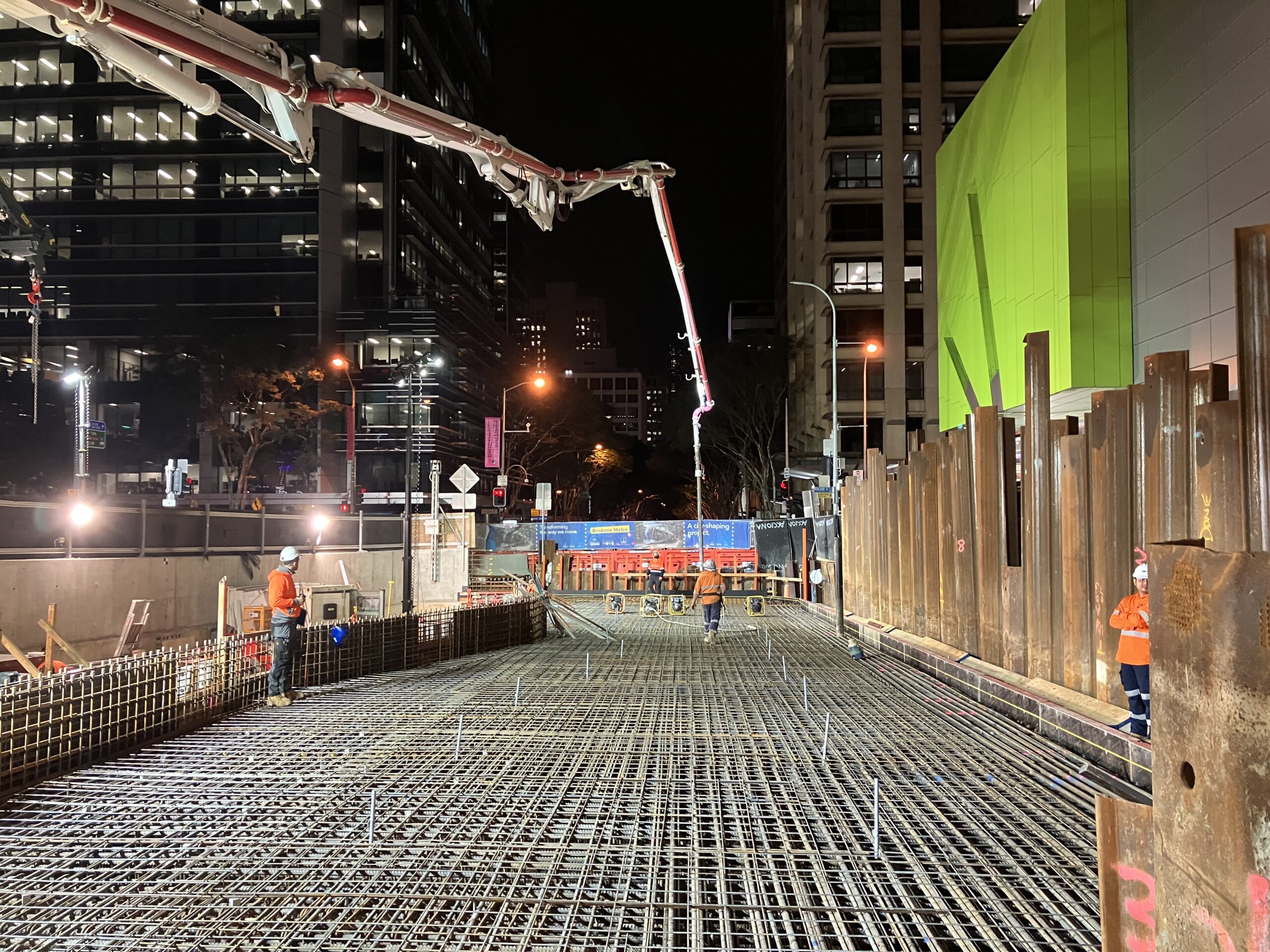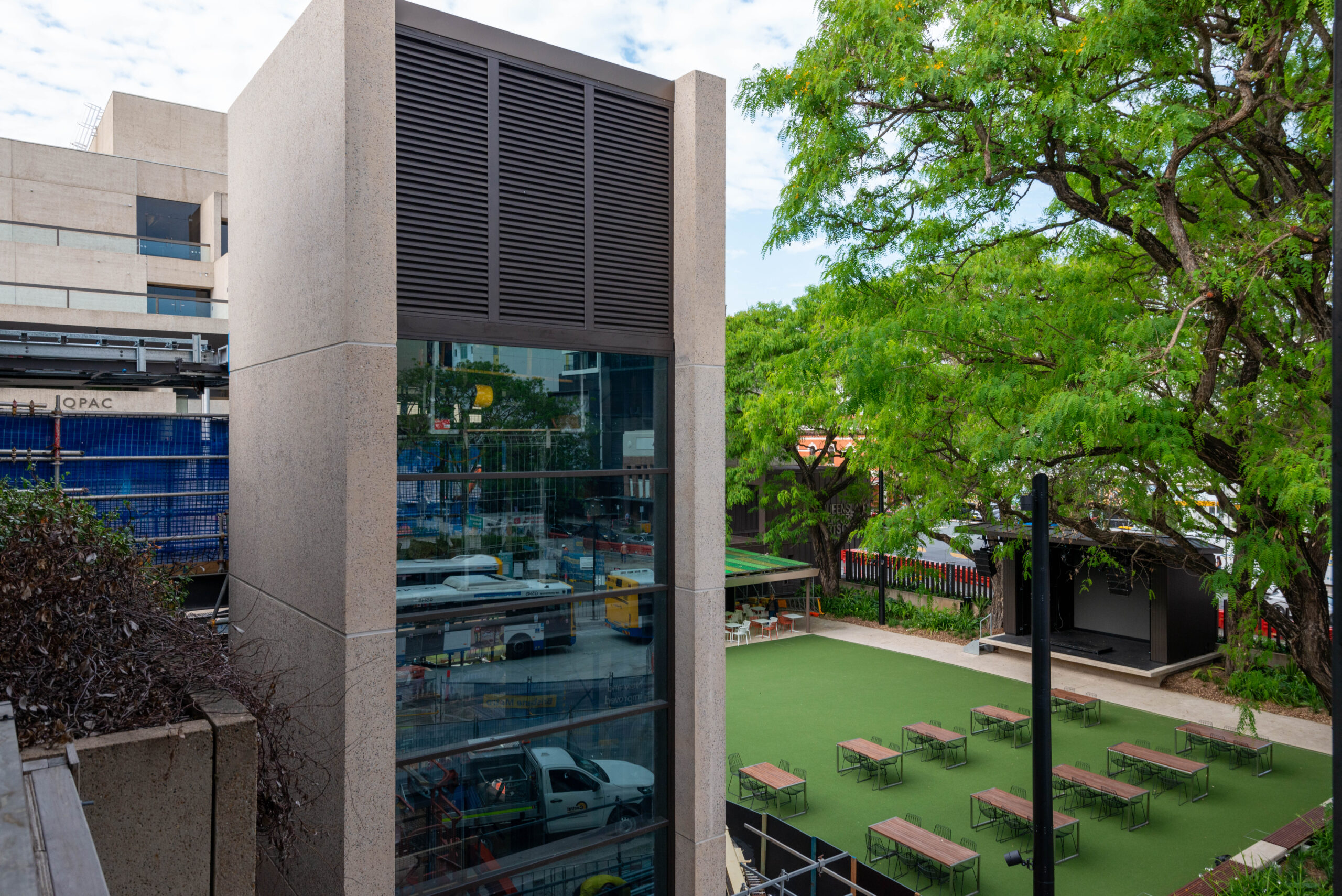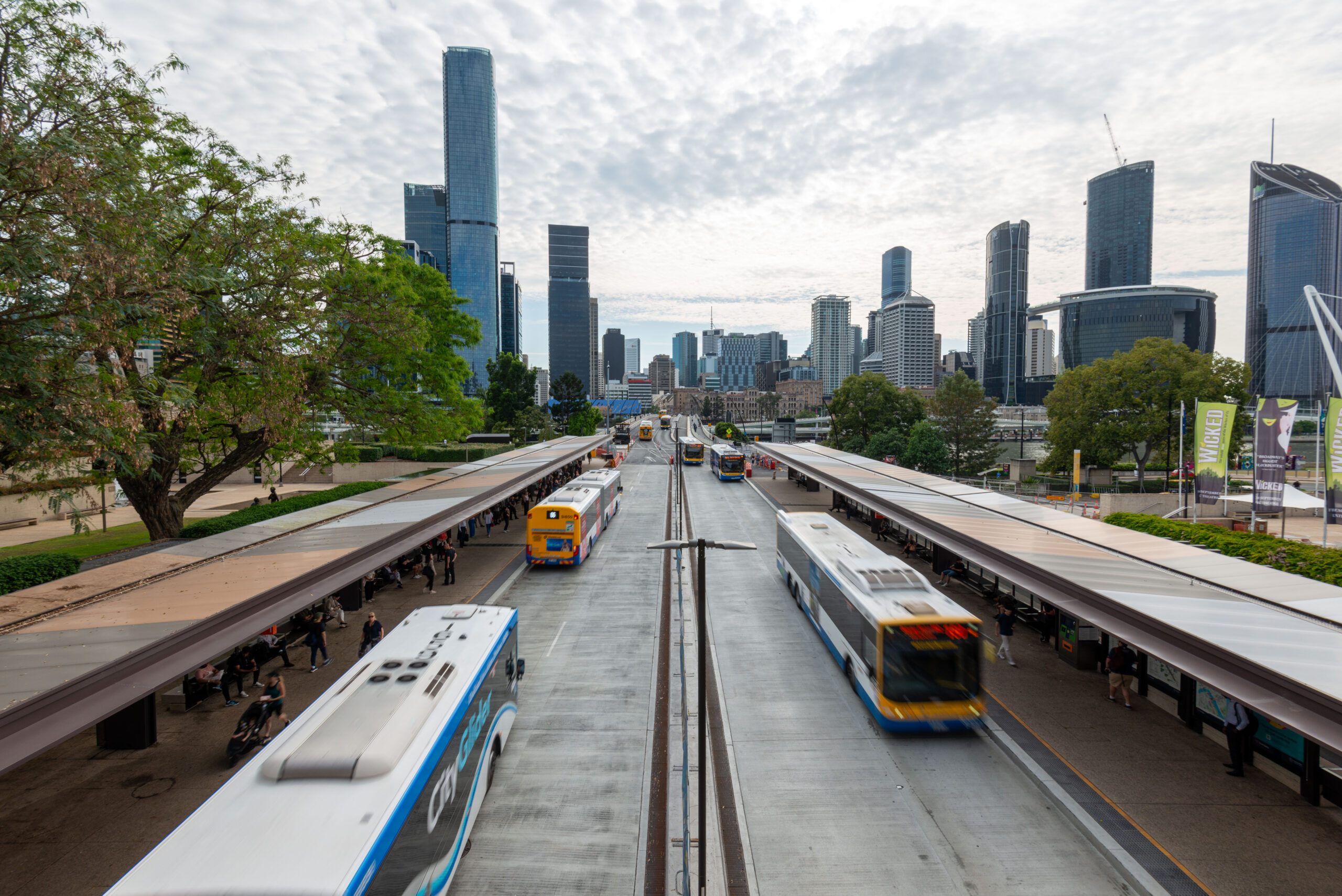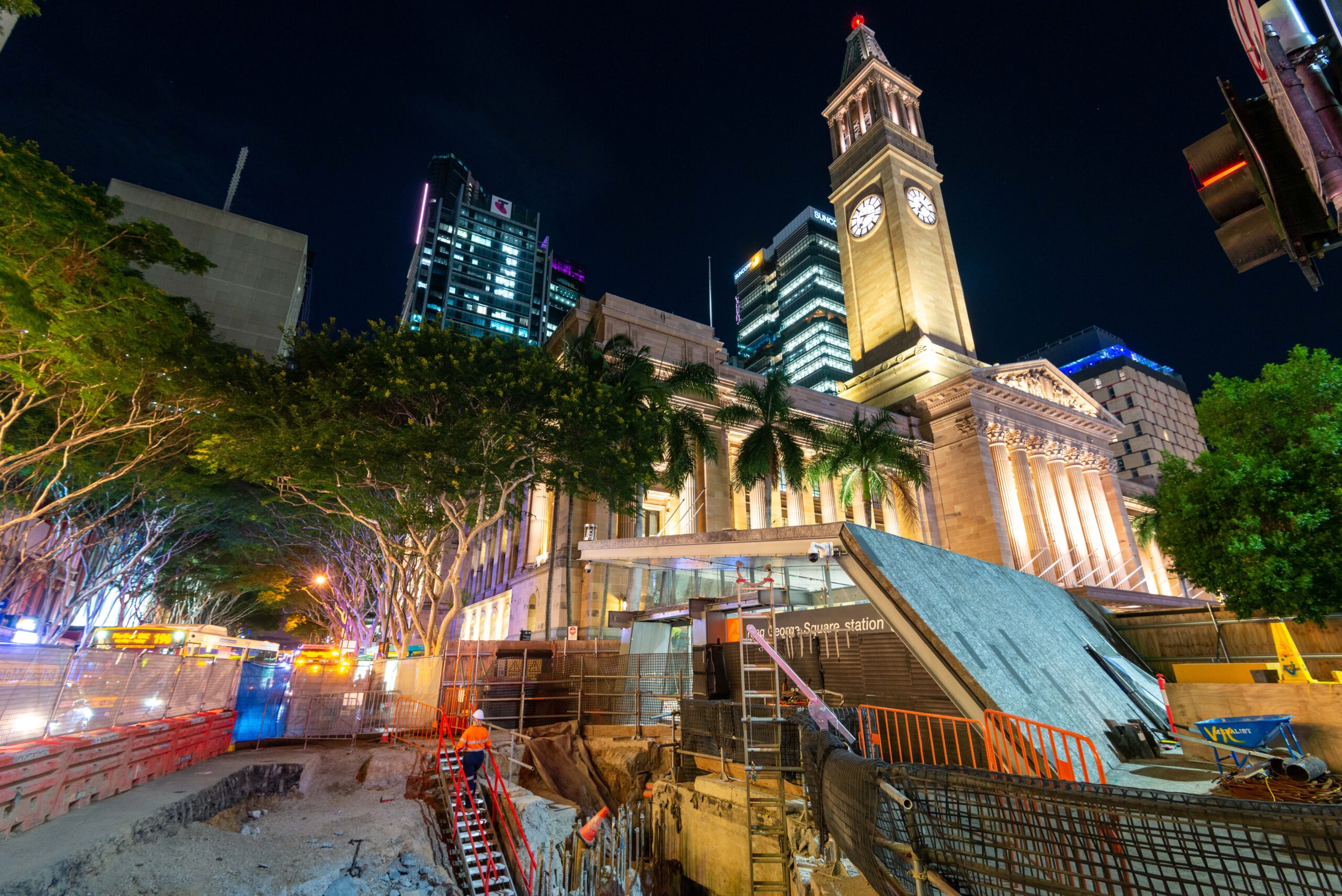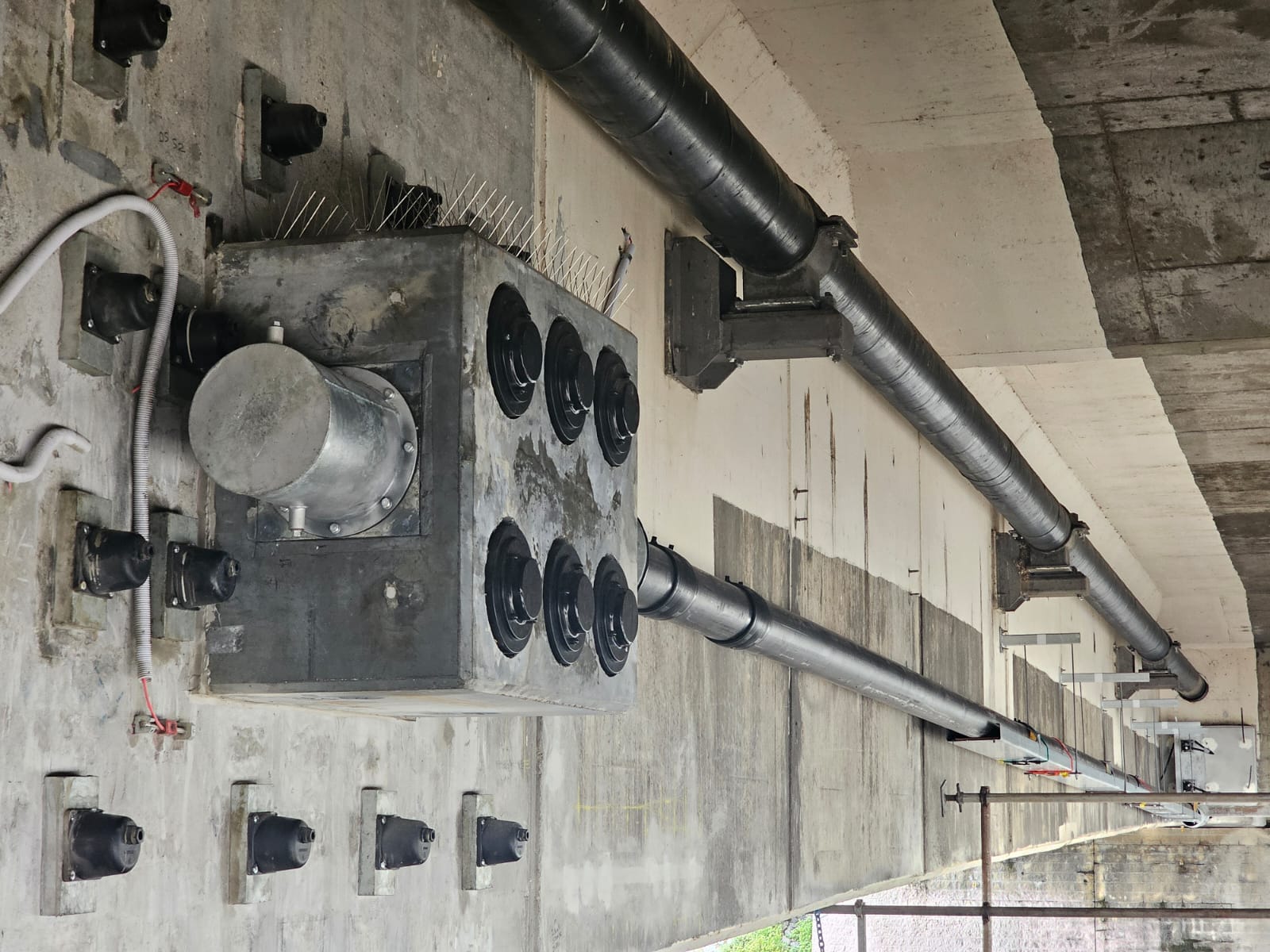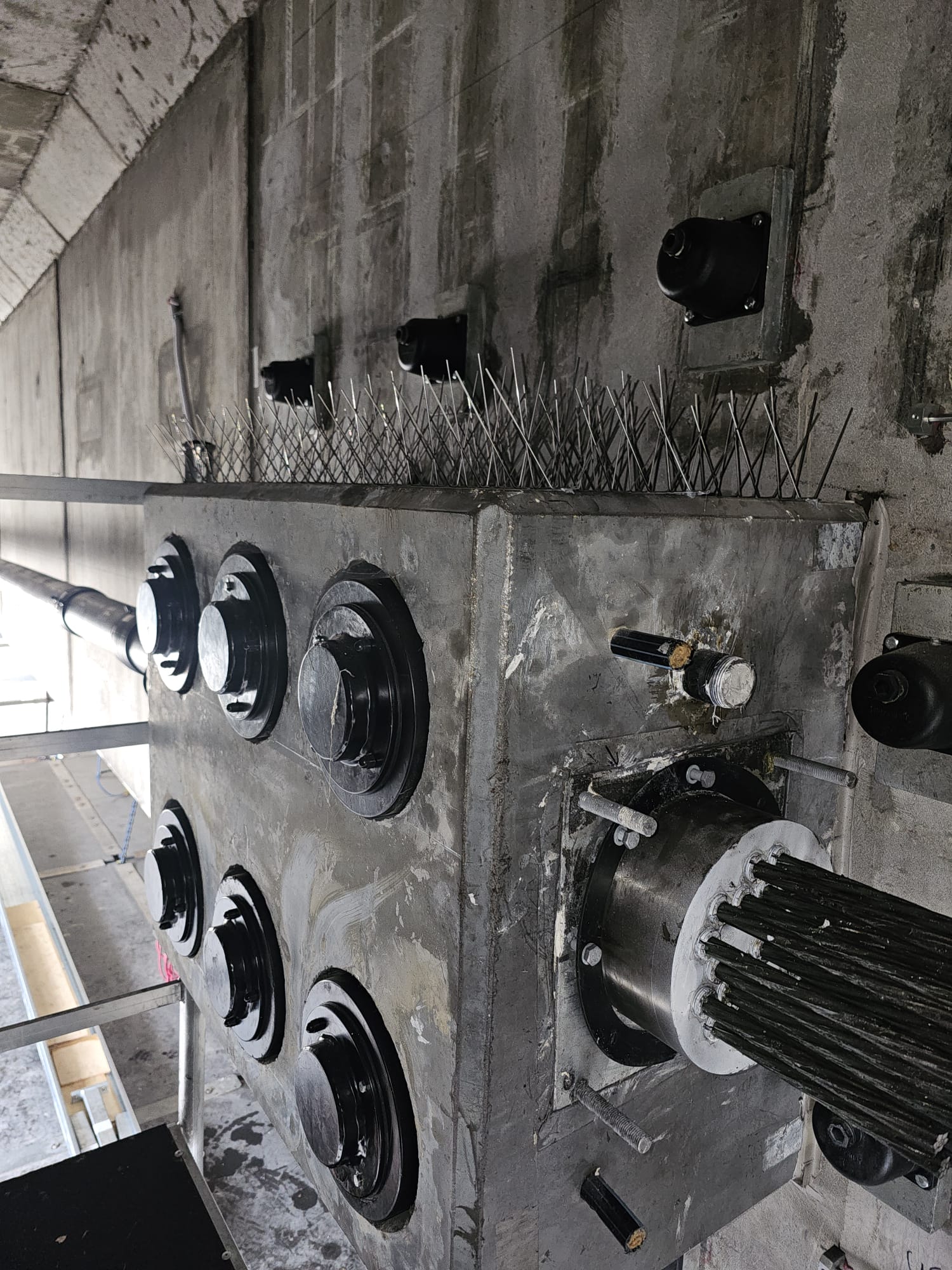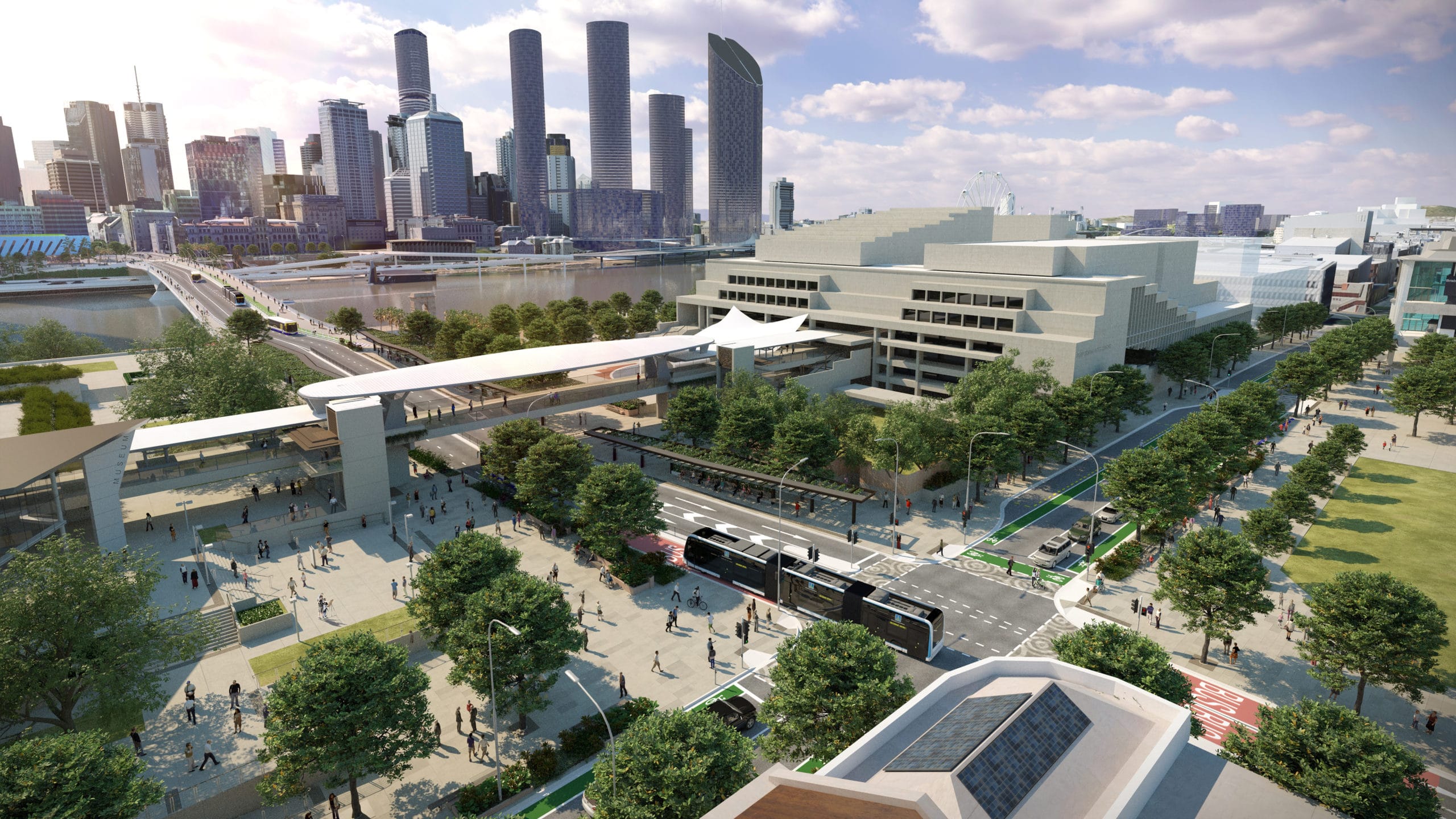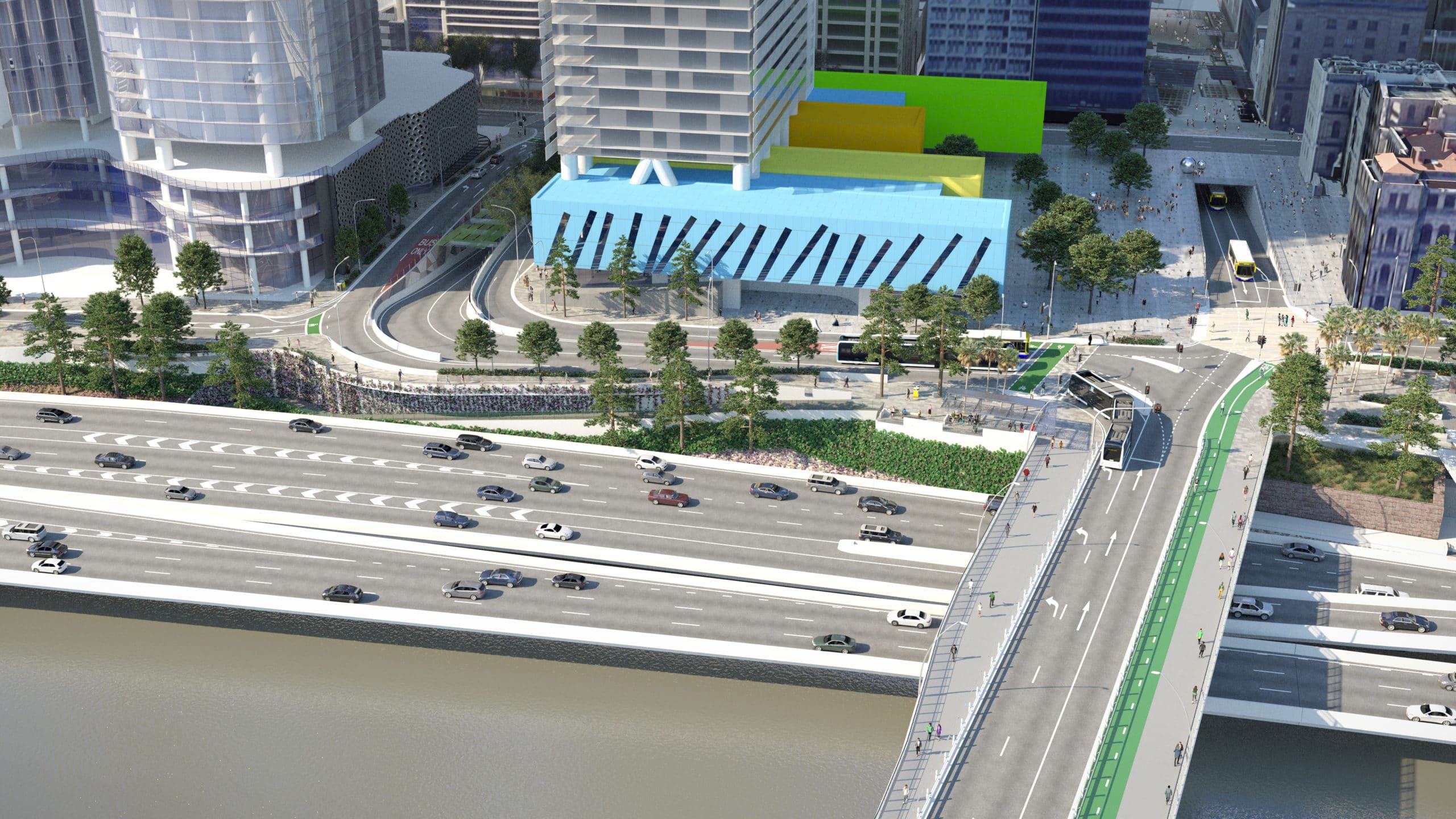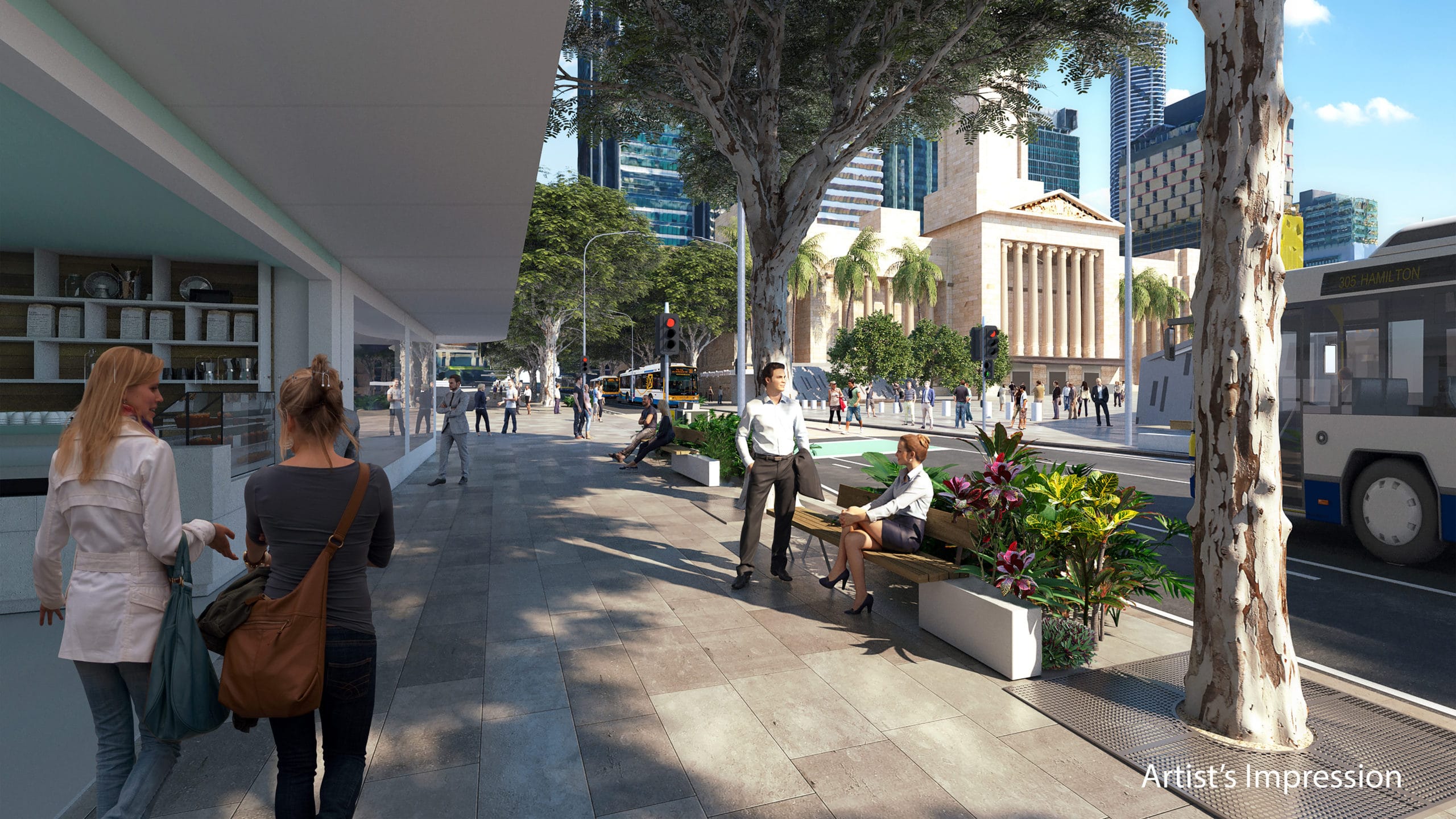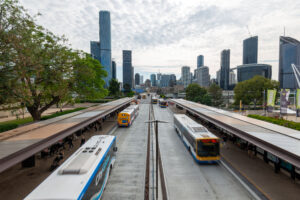 Brisbane City Council is delivering new and improved infrastructure to support the introduction of Brisbane Metro. Council is working with Brisbane Move - a partnership comprising construction-lead ACCIONA and design-lead Arup to design and deliver the major infrastructure works for the project.
Brisbane City Council is delivering new and improved infrastructure to support the introduction of Brisbane Metro. Council is working with Brisbane Move - a partnership comprising construction-lead ACCIONA and design-lead Arup to design and deliver the major infrastructure works for the project.
With more than a dozen work sites across the city, Brisbane Metro is tunnelling underground to help reduce congestion, upgrading stations and enhancing streetscapes to create greener, more connected public spaces.
Key features:
- A new tunnel beneath Adelaide Street connecting with the existing King George Square tunnel under Albert Street.
- Upgraded bus stations at King George Square, UQ Lakes, Buranda and the Cultural Centre station.
- Significant public space improvements on Melbourne Street and Grey Steet in South Brisbane and on Adelaide Street, North Quay and William Street in Brisbane’s CBD.
- Significant new sewer infrastructure.
- An enhanced and strengthened Victoria Bridge providing three lanes for Brisbane Metro and bus services and upgraded cycling and pedestrian pathways.
Ratings Highlights
| Category | Credit | Achievements/ Description |
| Innovation | Innovation | In an Australian first, the Victoria Bridge strengthening works employed external post-tensioning using Ultra-High-Performance Fibre-reinforced Concrete Blisters.
Benefits included:
|
| Energy and Carbon | Monitoring and reduction (Ene-1) and Use of renewable (Ene-2) |
|
| Materials | Materials footprint measurement and reduction (Mat-1) |
|
| Community health, wellbeing, and safety | Community health, wellbeing (Hea-1) | Positive contribution to three issues identified by the community:
1.Active transport:
2.Local skills development
3. Social inclusion
|
| Heritage | Heritage assessment and management (Her-1) | Heritage protection, interpretation, and enhancement:
|
| Stakeholder Participation | Level of engagement (Sta-2) | The project has excelled in managing stakeholder participation, implementing a comprehensive engagement strategy that spans from informing to collaborating. This strategy has been instrumental in fostering strong relationships and ensuring active participation from all stakeholders. The development of six detailed stakeholder engagement case studies, showcasing their innovative approaches and the positive impact to the community around the project. Throughout the project the construction team met weekly for face-to-face meetings and walk-throughs with key impacted stakeholders to mitigate the impact of works. A dedicated 24-hour Brisbane Metro construction hotline provided the opportunity for stakeholders to discuss issues and get responses in real-time. |
Verified Innovations
| Innovation Name | Description |
| Ultra-High Performance Concrete Blisters | In an Australian first, the Victoria Bridge strengthening works employed external post-tensioning using Ultra-High-Performance Fibre-reinforced Concrete Blisters.
Benefits included:
|


